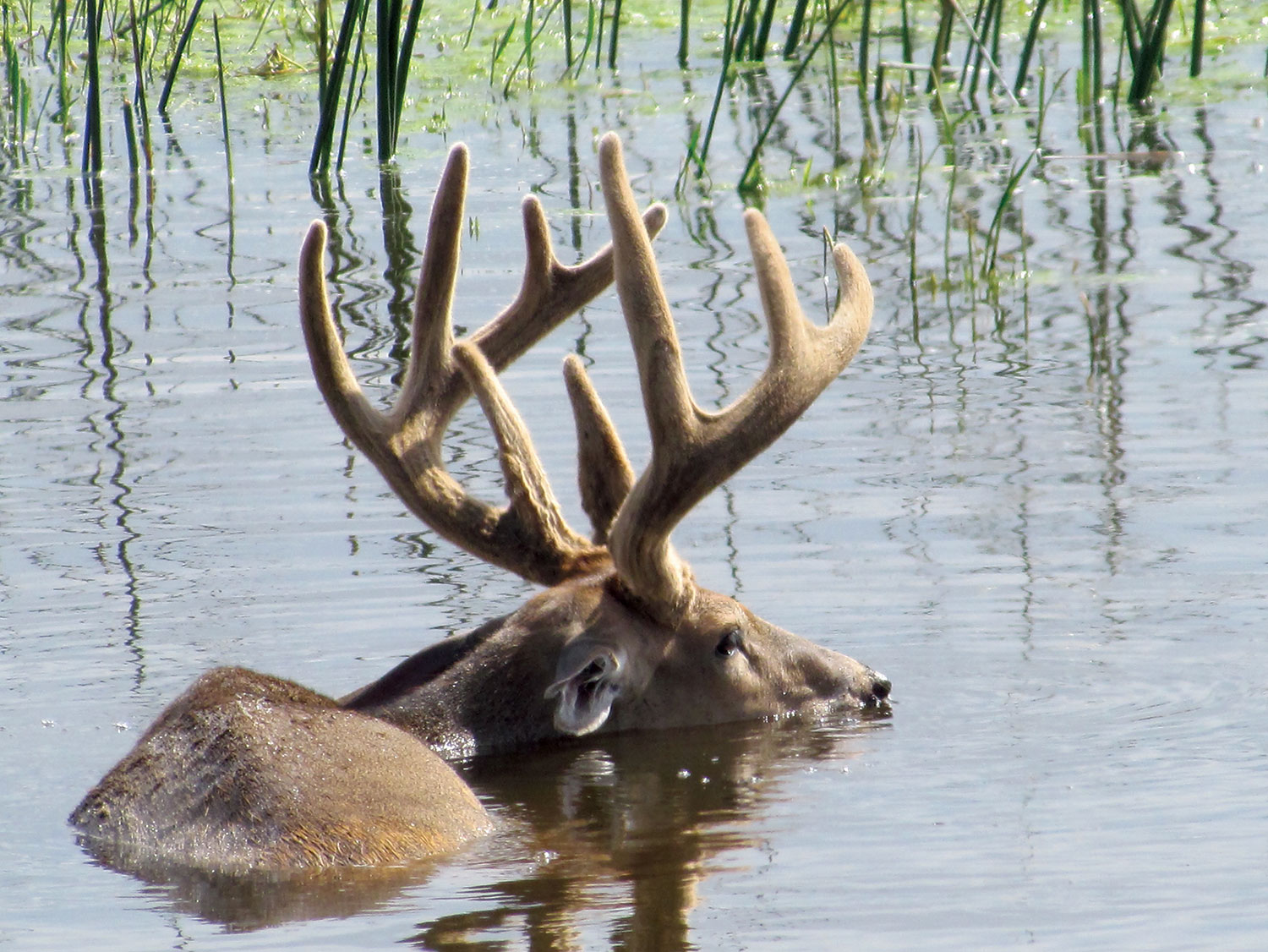Back Cast

I watched a doe and her twins for much of the summer as they moved from one piece of cover to the next, negotiating passing vehicles and other urban hazards they faced daily.
I could bank on seeing them most days before sunrise in a mixed stand of trees, hiding behind evergreen branches that touch the ground in places. The fawns, anxious about my approach, would break from cover while the doe would simply move her head to follow my passing.
For whatever reason, I haven’t seen any sign of the trio in the last two weeks or so, which is not unusual. Maybe my timing has been off, or the animals simply moved on to new digs that are obvious to them but lost on me.
Yet, under the circumstances, I wonder.
Nature can be cruel at times and we’re in the midst of one of those times as August noses up against September. For days now, reports to Game and Fish Department officials of dead or dying deer have been common, signaling an epizootic hemorrhagic disease outbreak that is seemingly at its worst in the Bismarck/Mandan area.
Department wildlife officials confirmed the first EHD case on Aug. 1. Reports of dead whitetails floating in water, or just barely hanging on, since then have been daily.
When I talked to Corey Erck, Bismarck area game warden for the Department, he said he’d received reports of dozens of dead deer.
“The word I’ve been using to describe what’s going on is ‘disturbing,’” Erck said. “You do this job because you enjoy nature, but what I’ve witnessed of late is disturbing.”
Wildlife biologists have long understood that white-tailed deer in North Dakota die every summer from EHD because the biting midge responsible for transmitting the virus is forever present.
It’s just that some years more whitetails are killed from the disease than others, and 2021 happens to be an outbreak year, at least close to home.
Scientists tell us that EHD is primarily a disease of ruminants, or cud-chewing animals with four stomach chambers, such as white-tailed deer, mule deer, pronghorn, bighorn sheep, moose, elk, bison, cattle and domestic sheep. While all these animals can be infected with the virus, it seldom kills anything but whitetails in North Dakota.
“The frightening thing is that we’re just hearing about the deer being found by people, but you would have to believe there are more,” Erck said.
As people on the landscape are seeing, whitetails with EHD often die in water or are found near water because the infected animals are running a fever and seek out the wet, cooling source.
It was troubling to look at the photos of dead deer and videos of animals in their last throes on Erck’s cellphone, and the only solace was knowing that deer showing clinical signs die within three to four days.
While EHD isn’t infectious to humans, finding a bunch of dead deer on the landscape can certainly shake many of us.
Ultimately, deer numbers rebound pretty quickly, biologists say, and generally the population level impacts are less dramatic than people assume when they are finding dead deer in August and September.
While nature is cruel at times, its resiliency is equally impressive.
It’s said the first series of hard frosts typically kills the midge that carries and transfers the EHD virus, which will slow or arrest the spread of the disease. Cooler weather is certainly something we can count on in this neck of the Northern Plains, but it’s only a wonder when it will get here.
